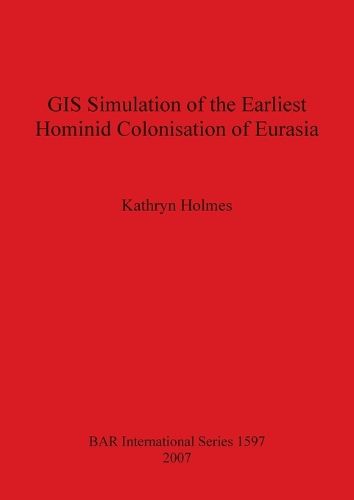Readings Newsletter
Become a Readings Member to make your shopping experience even easier.
Sign in or sign up for free!
You’re not far away from qualifying for FREE standard shipping within Australia
You’ve qualified for FREE standard shipping within Australia
The cart is loading…






This title is printed to order. This book may have been self-published. If so, we cannot guarantee the quality of the content. In the main most books will have gone through the editing process however some may not. We therefore suggest that you be aware of this before ordering this book. If in doubt check either the author or publisher’s details as we are unable to accept any returns unless they are faulty. Please contact us if you have any questions.
In order to understand fully Plio-Pleistocene hominid migrations, a whole gamut of interacting factors must be examined. It has been hypothesised that the most important variables affecting hominid migrations out of Africa would have been environmental, since in most respects hominids would have acted in the same manner as any other large land mammal of the time. For this work, therefore, as far as language barriers permitted, as many published sources as could be traced from palynological and palaeontological sites from the Late Pliocene and Early Pleistocene within east and northern Africa and Eurasia were included in the analysis. By examining the relationship between hominids, fauna and vegetation at sites in East Africa, as well as atDmanisi and 'Ubeidiya, the author was able to determine with what genera and in what environments hominids were preferentially associated. The use of a GIS simulation allowed the generation of a distribution map showing areas in Africa and Eurasia where the same combination of fauna and vegetation could be found. Various other interdisciplinary aspects of Late Pliocene and Early Pleistocene geography were also examined, indicating that during the earliest part of the period in question the Northern Hemisphere environment was distinctly less arid than in modern times, with areas of desert substantially reduced leading to large expanses of grassland. With the onset of glaciation the climate became increasingly arid, with an environment closeto the modern situation developing by the Middle Pleistocene. The effect of this on the timing and routing of hominid migration pathways is also covered in this volume.
$9.00 standard shipping within Australia
FREE standard shipping within Australia for orders over $100.00
Express & International shipping calculated at checkout
This title is printed to order. This book may have been self-published. If so, we cannot guarantee the quality of the content. In the main most books will have gone through the editing process however some may not. We therefore suggest that you be aware of this before ordering this book. If in doubt check either the author or publisher’s details as we are unable to accept any returns unless they are faulty. Please contact us if you have any questions.
In order to understand fully Plio-Pleistocene hominid migrations, a whole gamut of interacting factors must be examined. It has been hypothesised that the most important variables affecting hominid migrations out of Africa would have been environmental, since in most respects hominids would have acted in the same manner as any other large land mammal of the time. For this work, therefore, as far as language barriers permitted, as many published sources as could be traced from palynological and palaeontological sites from the Late Pliocene and Early Pleistocene within east and northern Africa and Eurasia were included in the analysis. By examining the relationship between hominids, fauna and vegetation at sites in East Africa, as well as atDmanisi and 'Ubeidiya, the author was able to determine with what genera and in what environments hominids were preferentially associated. The use of a GIS simulation allowed the generation of a distribution map showing areas in Africa and Eurasia where the same combination of fauna and vegetation could be found. Various other interdisciplinary aspects of Late Pliocene and Early Pleistocene geography were also examined, indicating that during the earliest part of the period in question the Northern Hemisphere environment was distinctly less arid than in modern times, with areas of desert substantially reduced leading to large expanses of grassland. With the onset of glaciation the climate became increasingly arid, with an environment closeto the modern situation developing by the Middle Pleistocene. The effect of this on the timing and routing of hominid migration pathways is also covered in this volume.